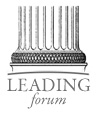 |
 |
02.17.25

7 Qualities that Drive High-Impact Teams
ORGANIZATIONAL teams determine overall performance, shape culture, drive growth, and deliver results — or not. Today’s teams face a new reality. Never before have they encountered the changes and challenges brought on them by remote, hybrid, and in-person work environments. Add in the emergence of AI and countless other workforce and societal trends, and it’s apparent that yesterday’s approaches no longer apply to today’s realities. This time of disruption demands that organizational leaders take an honest look at their teams and how they function and then apply accurate data to inform new ideas, explore strategies, and pursue professional development to position themselves for success. A recent study of 1,000 working Americans revealed essential actions needed for navigating today’s evolving work environments and team dynamics. The findings point to seven key behaviors, practices, and mindsets that describe high-achieving teams. Together, these qualities will enable leaders to reshape culture and drive high performance. As leaders realize the importance of getting it right to survive this new environment, they can draw from the study’s data-driven guidance and take action to redirect the trajectory of today’s teams. These key insights will inform leaders on where and how to take immediate action that will have impact and add immediate value to their teams: 1. Ensuring accountability. The study found that some 4 out of 10 people on a team at work are not experiencing the accountability that is so often requisite for trust, collaboration, teamwork, and results. Further, 54 percent have mentally checked out because a member wasn’t stepping up or was ineffective. In contrast, great teams are accountable to their leader and to each other — whether or not the leader is around. 2. Addressing distractions. The number and magnitude of distractions confronting workers has greatly increased through new technology, social and global events, and changes in the workforce and work environment — think hybrid and work-from-home settings. The findings showed that 1 in 3 workers were on teams without established standards to address distractions. In contrast, high-achieving teams have clear, agreed-upon, and proven standards to increase the likelihood of alignment, efficiency, and positive outcomes. 3. Elevating direct communication. A majority (57%) of workers said their teams do not freely share issues and ideas without being prompted — often referred to as “reactive honesty.” More alarming, 1 in 8 (12%) remain silent even when prompted to speak up. In contrast, high-achieving teams share issues and ideas without being prompted. Teams that embrace “straight-line communications” — addressing challenges directly through clear, direct communication — promote faster resolutions, better collaboration, and greater success. 4. Systemizing communication. The study explored communication on teams from a variety of angles and found that 39 percent of workers feel out of the loop on their teams. In contrast, a clear communication strategy and framework creates a foundation for effective, consistent communication across teams at all levels. Holding regular informative meetings, engaging in active listening, and instilling trust were among the top strategies for systemizing effective communication. 5. Understanding the influence of power. Close to half (44%) of workers said they felt only conditional power — or even powerless — on their teams. For leaders at every level, it’s important to understand the mindset, role, and influence of power on teams. Those who do so help to better engage and unlock the high achievement of different team members. 6. Optimizing differing work environments. Study findings highlighted the difficulty of addressing differences in workplace preferences. More than two-thirds (69%) reported that they found working in person at the office to be the most effective type of team interaction — followed by email (45%), online video conferencing (44%), and instant messaging (43%). High-achieving teams continually examine the interactions that allow them to most effectively move forward. 7. Promoting consistent high achievement. A great majority (75%) of workers said that being on a consistently high-achieving team would be a significant improvement to their work experience. In this time of workplace complexity, creating highly effective teams is a key solution to overcoming intrusive organizational challenges and to creating great cultures that drive results. 
Posted by Michael McKinney at 10:53 AM
|
BUILD YOUR KNOWLEDGE
 

How to Do Your Start-Up Right STRAIGHT TALK FOR START-UPS 
Grow Your Leadership Skills NEW AND UPCOMING LEADERSHIP BOOKS 
Leadership Minute BITE-SIZE CONCEPTS YOU CAN CHEW ON 
Classic Leadership Books BOOKS TO READ BEFORE YOU LEAD |